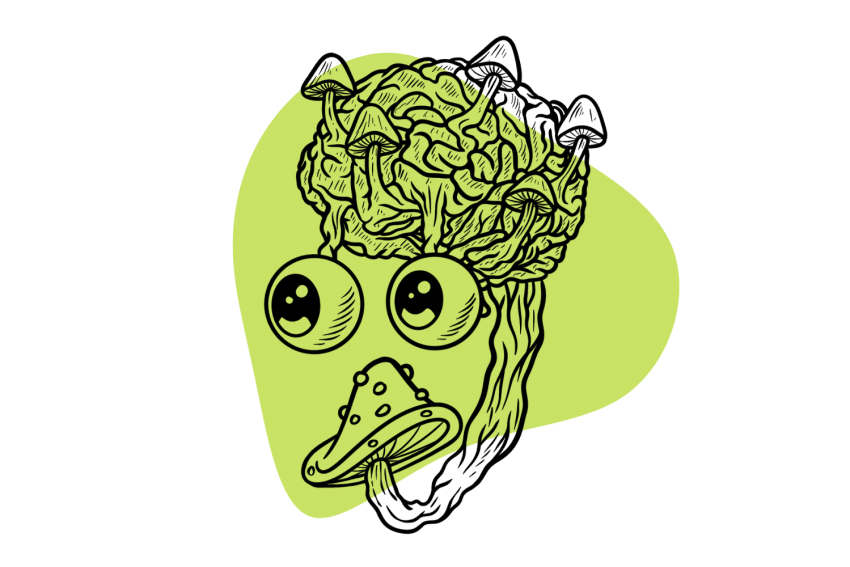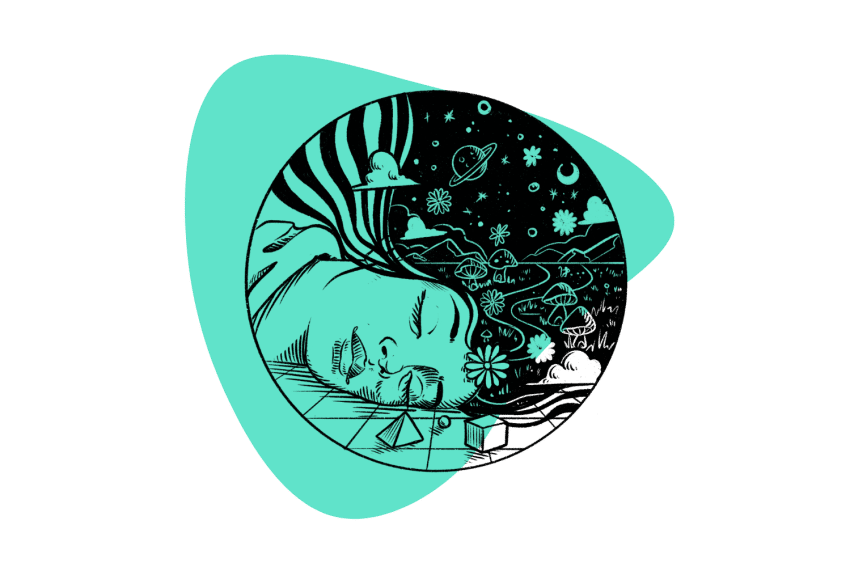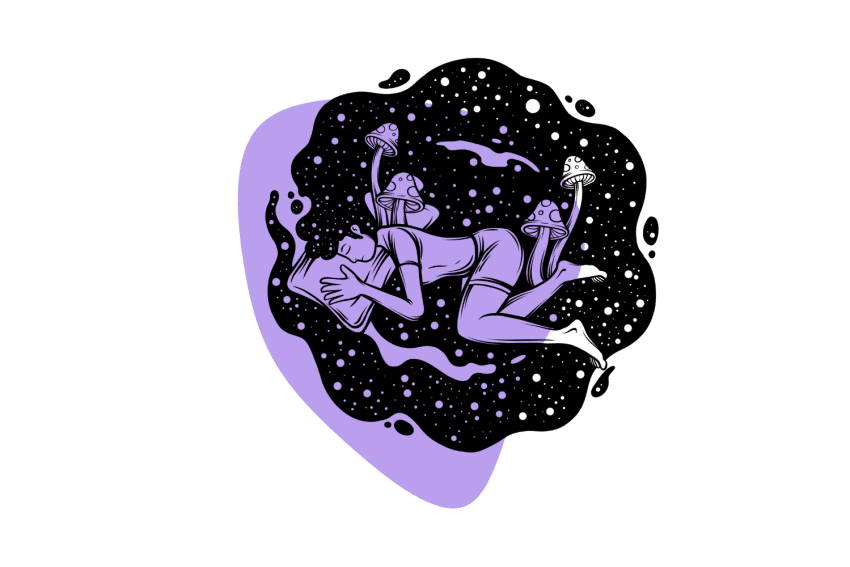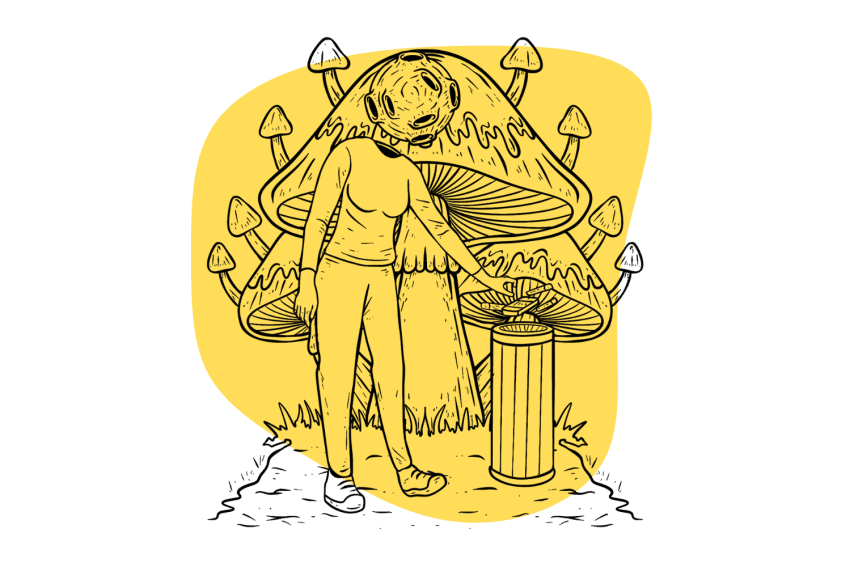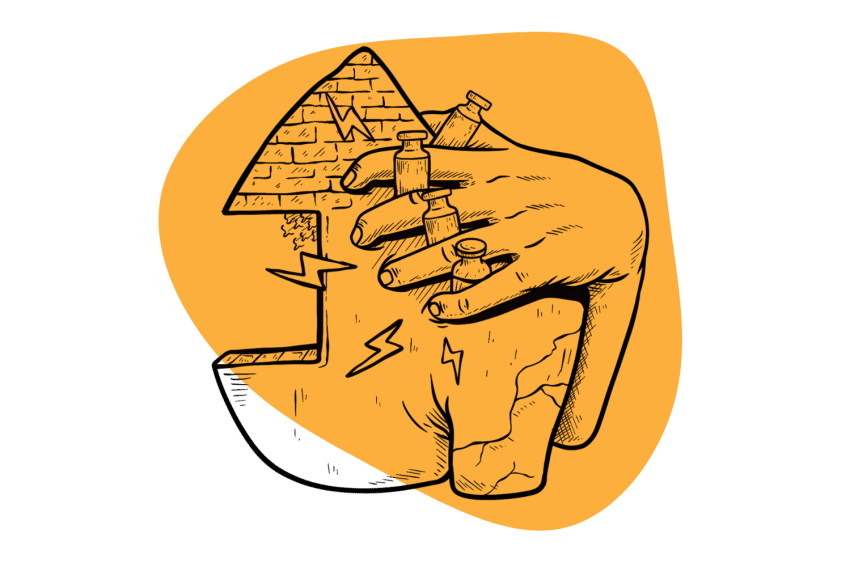Antidepressant Use: An In-Depth Look at What the Statistics Say
Depression is at an all-time high, and that means more people are using antidepressants. Here’s a look at who’s using them and what it all means.
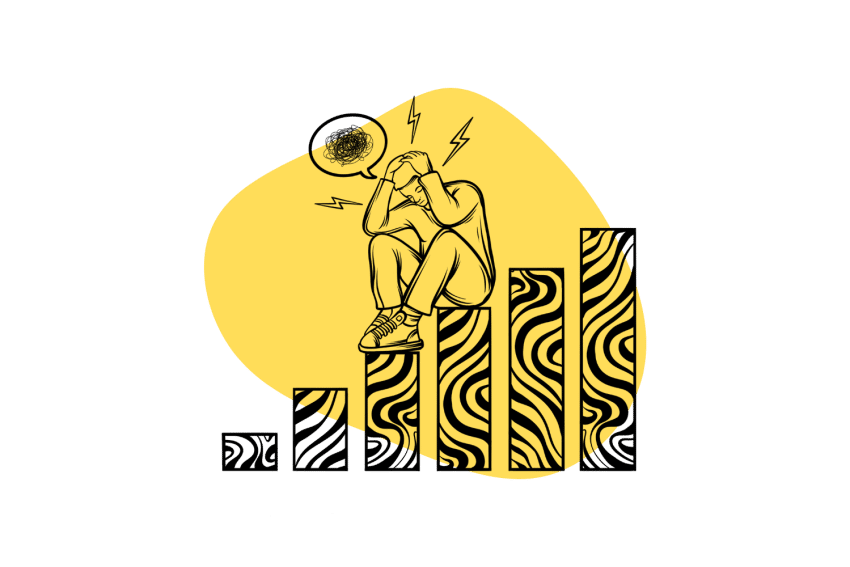
The numbers are in, and there’s little doubt that antidepressant use has risen considerably over the last few decades — especially in high-income countries in the Americas and Western Europe.
But what are some of the specifics in regard to this upward trend?
How do the statistics line up when we compare them by country or in terms of gender and age groups? There is certainly a lot of data to unpack.
Let’s dive into the nitty-gritty and attempt to glean the major trends when it comes to antidepressant use and what they might mean for society at large.
Global Antidepressant Use: Factors That Influence Different Demographics & Depression
Getting a completely accurate measurement of the number of antidepressant users worldwide will probably never happen.
On top of the sheer impossibility of reaching every person on the planet with a survey, there are some factors that could make the lines blur. Some cultures may consider antidepressant activity to involve group activities and celebrations rather than taking drugs.
Many factors influence the members of any given culture and thus impact their chances of developing depression as well as the way that they deal with it:
- Religious beliefs
- Geographic location
- Economy
- History
- Relations with other countries
- Education
- Relative isolation from the rest of the world
These are just a few of the dozens of factors that influence the mindset of a particular demographic.
The result of these factors, in combination, determines the amount of stigmatization or appreciation that a population will have regarding the use of pharmaceuticals. It also determines their ability to actually acquire and use such drugs.
People in a country with a fragile economy, for example, are less likely to be able to afford the luxury of antidepressant medication.
However, if that impoverished culture remains connected to its cultural roots, then they may not need or wantantidepressants in the first place.
Some cultures may engage in what they consider to be ritualistic antidepressant medicine, for example. Here in the West, we tend to reserve the term antidepressant for a little pill that makes us cry less.
Other cultures have no term for depression. While this may be the natural result, in some cases, of their regular, ritualistic engagement in community activities like song and dance, other cultures simply refuse to acknowledge depression or its symptoms as health problems, and thus members are discouraged from discussing them [1].
We will discuss this in greater detail below, but suffice it to say for now that many cultures simply have no concept of depression due to the numerous factors that contribute to a demographic’s understanding of the issue.
Global Statistics on Depression
Unfortunately, depression seems to be on the rise. Whether this is a result of more people becoming depressed, changing views on depression and the destigmatization of discussing mental illness, or improved census-taking tactics is up for debate. It is most likely a combination.
As of 2020, the World Health Organization (WHO) reported that there were 264 million depressed people across the globe. This is a continuing trend marked by a stark increase of about 18.4% between 2005 and 2015.
The majority of people with depression live in major urban centers, according to the report. Increases in depression are proportionate among different age groups.
Depression by Age
The aforementioned WHO report states that depression tends to peak in adulthood. However, the age at which people are most likely to experience their first bout of depression is 19. The median age for depression is about 31 years old [2].
Depression by Income
Age-related statistics for depression are heavily correlated with income status.
- The age groups 19-39 and 40-59 were differentiated in the WHO study. Regardless it was revealed that people in both groups fared significantly worse in regards to developing depression than people of the same age who are financially secure.
- People of this age who live above the poverty line have a 1.2% chance of developing “serious psychological distress.” People living below the poverty line have an 8.7% chance.
- In lower and middle-income countries, about 3.2 million adolescents, as well as 76-85% of the general population, don’t receive treatment for depression.
Depression Among Minority Groups
At least in the United States, there is a significant disparity between different minority groups and their experiences of depression [3].
- These disparities began to emerge most significantly following the Great Recession. Since then, Caucasians remain the least likely group to develop depression (at 7.8%).
- Hispanics have an 8.9% chance of developing depression.
- Compared to Caucasians of the same age, Hispanic people approaching old age are 44% more likely to become depressed.
- African-Americans are 10.8% likely to become depressed.
Global Trends Regarding Antidepressants
A recent study conducted by the Organization for Economic Cooperation and Development (OECD) shed significant light on the status of antidepressant use in several OECD countries.
An evaluation of antidepressant consumption in select countries was published in Statista in 2022 and measured the number of defined daily doses per 1,000 inhabitants [4].
It found that the top consumers of antidepressants were in Iceland (153.4), Portugal (131.1), Canada (121.5), and Australia (115.6).
Lithuania (35.4), Hungary (30.4), Latvia (23.4), and South Korea (23.4) found themselves at the bottom of the list.
While it’s important to understand how the selected countries compare at a specific moment, more significant conclusions emerge when we look at the increasing rate of antidepressant use over time.
In this sense, the main impression of OECD studies throughout the years is simple to discern: from 2000 to 2017, antidepressant use has about doubled in all of the 26 selected OECD countries.
Antidepressant Use in the United States
When looking at the OECD study, there is one notable exception: the United States.
It’s no secret that over the past 5–10 years, antidepressant use among the US population has increased substantially. Several studies have confirmed this upward trend.
For instance, one study released in 2018 by the US Department of Health and Human Services revealed that antidepressant use had risen exponentially from 1988 to 2014. The precise figures are seen in the following chart: [5]
The prevalence of antidepressant use in the total population jumped from 1.8% in 1999–1994 to 13.9% in 2011–2014. This is quite astounding growth.
There are also other, more recent, studies that show the continuation of this trend.
Another study, included in the 2020 National Center for Health Statistics, showed that during 2015–2018, 13.2% of adults aged 18 overused antidepressant medication in the past 30 days [6].
The study also highlighted important information regarding specific subsets of the population. For instance, antidepressant use consistently increased with age, with the highest among women aged 60 and over (24.3) — almost 1 in 4 women in that subset use antidepressants. Also, women, in general, showed double the rate of antidepressant use compared to men. This trend holds remarkably steady across time and age groups.
There were also significant differences when it came to race and level of education.
Non-Hispanic whites (16.6%) were more likely to use antidepressants than non-Hispanic blacks (7.8%), Hispanics, and Asians (2.8%). And those with some college education (14.3%) were more likely to use antidepressants than those with a high school education (11.5%) or less (11.4%).
Interpreting the Data: Quantitative & Qualitative Analysis Across the Globe
There are different ways to evaluate data. The two major distinctions are quantitative and qualitative analysis.
- Quantitative analysis is easier to gather because it relates to numbers. Surveys that evaluate data from 1-10, for example, provide quantitative data. Studies that focus on the numbers of populations and demographics are also evaluating quantitative data.
- Qualitative analysis provides much more useful data but is also more challenging to obtain. Qualitative analysis involves understanding the how, why, and what underlying different phenomena and behaviors.
In terms of antidepressant use, quantitative data is relatively easy to obtain. One needs only calculate the number of people in a given region who take antidepressants to acquire a quantitative measure.
Not all quantitative measures are easy to obtain, though. The total number of instances of major depressive episodes, for example, would require a much more detailed study to obtain.
Looking at qualitative data provides the most context and usefulness but also requires the greatest amount of resources. For example, quantitative evidence would involve researchers understanding how and why a certain demographic reached the level of depression that it did rather than simply calculating the number of depressed people.
Both types of evidence are useful for researchers. For example, analyzing the changes in antidepressant use in selected countries can usually tell us a lot about global mental health trends.
How do we interpret the OECD antidepressant data in the broader context of mental health and depression?
It’s easy to come to the following logical conclusion: antidepressant use has taken off considerably across all selected countries, so the global situation regarding depression and mental health, in general, has to be a worsening one.
However, even though there’s plenty of evidence to back up this generalized theory, things aren’t that simple.
1. Consider the Factors
The fact is, antidepressant use is not a completely accurate window into complicated matters such as rates of depression and suicide. As it turns out, the propensity for antidepressant use is usually a complex mix of factors like stigma, wealth, health coverage, depression, and more.
South Korea serves to illustrate this complicated relationship. In the 2020 study, South Korea had the lowest rates of antidepressant use, implying depression is not a major problem. But South Korea has one of the highest suicide rates among developed countries.
Qualitative studies of attitudes surrounding antidepressant use in South Korea have revealed that seeking treatment for a mental illness is perceived as a personal weakness. This thinking is one of the main factors leading to the low rates of antidepressant use.
With a comprehensive understanding of the factors that complicate data interpretation, we can look at some of the explanations for the global trend toward increased antidepressant use.
2. Theories on Increased Antidepressant Use
The OECD has suggested two possible reasons for the increase in antidepressant usage.
First, the course of treatment with antidepressants now lasts longer than it used to. In fact, the World Health Organization (WHO) now recommends that those prescribed antidepressants take them for at least nine to twelve months after they’ve recovered. The OECD suggests that this leads to a higher percentage of a country’s population taking antidepressants at any one time.
Second, the OECD also recognizes that antidepressant use has increased because they’re now prescribed for more than major depressive episodes. Antidepressants now treat mild depression, anxiety, social phobias, and more.
How Are People Treating Their Depression?
There are numerous treatments available for managing depression.
Some of them are fairly simple; altering your brain chemistry with drugs is a good example of such.
Some involve identifying the root cause of depression via therapy and working to uproot the impact of that cause on the individual’s present-day behavior.
Yet other treatments involve making lifestyle changes or improvements to create a sense of belonging and acceptance to take the place of depression.
We have already discussed at length the number of people taking antidepressant drugs. However, other methods of fighting depression are just as valid. Many consider them more valid than the “chemical Band-Aid” approach and prefer them to such an alternative.
1. Lifestyle Changes
Lifestyle changes are paramount for anybody hoping to beat depression. You need to fill the space that is currently occupied by your depression.
Here are some common, effective methods.
Exercise
As simple as it is, exercise is incredibly efficient at fighting depression. One of the longest studies on its effectiveness followed more than 30,000 patients over 11 years and concluded that at least 11% of cases could have been overcome with exercise alone [7].
Improved Social Support Networks
As we have highlighted several times, social isolation and a lack of belonging almost invariably result in depression. This is also reflected in an individual’s political ideology and the numerous studies that prove conservative-minded individuals are less prone to mental illness than liberals [8].
Study members who fit into the category of “liberal extremists” averaged about 150% more likely to develop mental illness.
This is likely because liberals tend to focus on issues of a grand scale, many of which would never enter their sphere of reality except by their own allowance; conservatives tend to accept inequality and the limitations of the social order and, instead of fighting it, direct their energy on strengthening their personal social networks.
Good Sleep & Diet
Both diet and sleep are important for mental and physical health. The two regulate hormonal, inflammatory, metabolic, immune, and just about every other type of pathway in the body.
On the one hand, a healthy diet rich in quality fats, vitamins, and minerals, coupled with a refreshing 8 hours of nightly sleep, will replenish and retain these numerous systems. Conversely, failing to eat healthily and neglecting your body’s need to sleep will invariably lead to inflammation, instability, and imbalance. These can manifest as depression [9, 10].
2. Therapy
There are dozens of different therapeutic modalities out there. Different types of therapy are more or less beneficial for different types of people. It’s important to be aware of this when trying out therapy so that you don’t give up on it entirely if one type of therapy doesn’t work out.
Cultural Antidepressive Phenomena
As mentioned above, some cultures simply have no words or concept of depression.
Research has revealed, for example, that group singing—which we see practiced regularly in nearly every indigenous culture around the world—fulfills basic human needs for belonging and acceptance [11,12].
These are two of the most important measures for determining depression or the lack thereof. Depressed people often feel isolated and hopeless, lacking purpose and thus living without a positive vision for the future. This naturally leads to depression.
Finding a way to help that person feel included and accepted, with a sense of belonging as well as a sense of purpose, is tremendously helpful for fighting depression. In fact, both group singing and dance therapy interventions have been studied and proven effective for reducing depressive symptoms in adults [13, 14].
Cultures that practice these things on a regular basis tend to have far lower rates of depression.
However, this quantitative data can be misleading. How so? Well, cultures that are repressive or restrictive of the idea that depression is a real condition may place such a strong stigma against it that members of that culture feel discouraged or hesitant to discuss it.
The result of this repressive act? Far lower reported rates of depression.
Conclusion: What Do the Numbers Suggest?
As mentioned before, it is not possible to draw definitive conclusions about the state of mental health in the United States from the marked rise in antidepressant use. In general, there are two possible explanations; one being that antidepressants are used for a longer period of time. The other is that antidepressants are used to treat more than severe depression. It’s likely the increase is due to both, along with a host of other reasons.
At the moment, more studies are needed in order to untangle these questions and examine these factors individually.
References
- Shalchi, H. (2022) Expressing depression differs across cultures. BCM Blogs, Momentum.
- Solmi, M., Radua, J., Olivola, M., Croce, E., Soardo, L., Salazar de Pablo, G., Il Shin, J., Kirkbride, J. B., Jones, P., Kim, J. H., Kim, J. Y., Carvalho, A. F., Seeman, M. V., Correll, C. U., & Fusar-Poli, P. (2021). Age at onset of mental disorders worldwide: Large-scale meta-analysis of 192 epidemiological studies. Molecular Psychiatry.
- Dunlop, D.D., Song, J, Lyons, J.S., Manheim, L.M., Chang, W.C., National Center for Biotechnology Information (2003, November). Racial/Ethnic Differences in Rates of Depression Among Preretirement Adults.
- Mikulic, M. (2022, December 8). Antidepressant consumption in selected countries 2021 Published by Statista, Dec 8, 2022. Retrieved May 12, 2023.
- National Center for Health Statistics. Health, United States, 2017: With special feature on mortality. Hyattsville, MD. 2018
- Brody, D. J., & Gu, Q. (2020). Antidepressant Use Among Adults: United States, 2015-2018. NCHS data brief, (377), 1–8.
- Harvey, S. B. et al. Exercise and the prevention of depression: Results of the hunt cohort study. Am. J. Psychiatry 175, 28–36 (2018).
- Schlenker, B. R., Chambers, J. R., & Le, B. M. (2012). Conservatives are happier than liberals, but why? Political ideology, personality, and life satisfaction. Journal of Research in Personality, 46(2), 127-146.
- Firth J, Gangwisch J E, Borsini A, Wootton R E, Mayer E A. Food and mood: how do diet and nutrition affect mental well-being? BMJ 2020
- Sarris, J., Thomson, R., Hargraves, F. et al. Multiple lifestyle factors and depressed mood: a cross-sectional and longitudinal analysis of the UK Biobank (N = 84,860). BMC Med 18, 354 (2020). https://doi.org/10.1186/s12916-020-01813-5
- Camlin, D. A., Daffern, H., & Zeserson, K. (2020). Group singing as a resource for the development of a healthy public: a study of adult group singing. Humanities and Social Sciences Communications, 7(1), 1-15.
- Hendry, N., Lynam, D. S., & Lafarge, C. (2022). Singing for Wellbeing: Formulating a Model for Community Group Singing Interventions. Qualitative health research, 32(8-9), 1399–1414. https://doi.org/10.1177/10497323221104718
- Salihu, D., Wong, E. M. L., & Kwan, R. Y. C. (2021). Effects of an African Circle Dance Programme on Internally Displaced Persons with Depressive Symptoms: A Quasi-Experimental Study. International Journal of environmental research and public health, 18(2), 843. https://doi.org/10.3390/ijerph18020843
- Karkou, V., Aithal, S., Zubala, A., & Meekums, B. (2019). Effectiveness of dance movement therapy in the treatment of adults with depression: a systematic review with meta-analyses. Frontiers in Psychology, 936.

